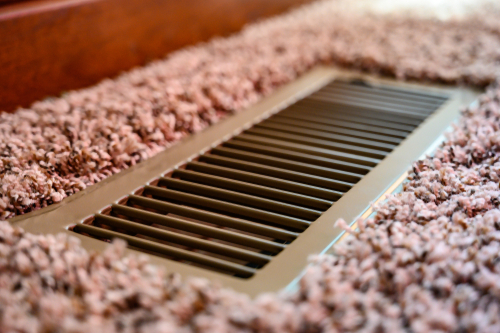April 9, 2024
What Is a Cold Air Return and How Does It Work?
When it comes to maintaining a comfortable and energy-efficient home, understanding the intricacies of your HVAC system is key. There are many components that work together from the thermostat to your furnace or air conditioner to the ducts that distribute the conditioned air.
This guide will delve into what cold air returns are and how they work so that you have a clearer understanding of how the elements of your heating and cooling systems function together.
What Are Cold Air Returns and How Do They Work?
A cold air return is an essential part of your home’s heating, ventilation, and air conditioning (HVAC) system. Its primary function is to facilitate air circulation throughout your home so that each room remains evenly comfortable throughout the year.
The Mechanism of Cold Air Returns
The cold air return’s primary role is to provide a pathway for air to return to your furnace or air conditioning unit. Here’s a step-by-step breakdown of how it works:
- Air Circulation: As your HVAC system operates, it heats or cools the air and then pushes this conditioned air into the rooms of your home through supply vents. As the air disperses, it naturally cools down or warms up (depending on the season). The colder air becomes denser and settles at lower levels in the room.
- Return of Air: This is where cold air return vents come into play. These are specifically designed openings in your home that allow the cooler, denser air to flow back through your ductwork to the HVAC system. They are strategically placed in various parts of your home to capture the air that has circulated and changed temperature.
- Heating or Cooling Process: Once the air is drawn back into the system through the cold air returns, it is directed back to the furnace or air conditioning unit. Here, the air is either heated or cooled once again, depending on the set temperature on your thermostat.
- Filtration: Before the air passes through the HVAC unit to be heated or cooled, it goes through a filter. This process removes dust, allergens, and other particles from the air, ensuring that the air circulated back into the rooms is not only at the right temperature but also clean and safe.
- Re-distribution: After being reconditioned and filtered, the air is sent back into the living spaces through the supply vents, and the cycle continues. This circulation process ensures that the temperature within your home remains consistent and comfortable.
The Importance of Cold Air Returns
The cold air return vents distributed throughout your home ensure that air efficiently moves in a continuous loop through your HVAC system. Without cold air returns, your system would struggle to pull in the air it needs. This could lead to inefficiencies, higher energy costs and potentially uneven temperatures throughout your home. Lack of or insufficient cold air return can also make your system work harder and cause premature wear and tear.


Where Are They Located?
Cold air returns should be strategically placed throughout your home. You’ll typically find vents or grills in every room or at least in every area served by your heating and cooling system. They are often located on lower walls or in the floor and are usually larger than supply vents. In most cases, they are positioned away from windows and exterior doors to avoid drawing in outdoor air directly. In multi-story homes, you’ll find cold air returns both upstairs and downstairs to maintain balanced air pressure and efficient circulation throughout the house.
The Dangers of a Blocked or Covered Air Return Vent
An air return vent blocked by furniture, curtains or other obstructions is detrimental to your HVAC equipment. Disrupted air flow can lead to several issues, including:
- Inefficient Heating and Cooling: Your system has to work harder to circulate air, leading to increased energy costs.
- Increased Wear on HVAC Components: The added strain can shorten the lifespan of your system.
- Uneven Temperatures: Without the proper circulation, some rooms in your home will become overheated while other rooms will be cold.
- Poor Indoor Air Quality: Reduced air circulation means dust, allergens and pollutants don’t get properly filtered out.
Maintenance Protocols
Ensuring your cold air returns can do their job effectively involves a few simple practices:
- Regular Cleaning: Dust and debris can accumulate, reducing efficiency. Vacuum or dust them regularly.
- Keeping Them Unobstructed: Be mindful of furniture placement and avoid covering these vents.
- Routine HVAC Maintenance: Annual check-ups can help identify and rectify any potential issues before they escalate.
- Install Additional Vents: How many cold air returns do you need? Your HVAC specialist can tell you if your system is working harder than it should.
Your Local Colorado HVAC Experts
Those cold air return grills and ducts might not be the most glamorous part of your home, but they play a pivotal role in keeping your family comfortable and your air clean. By understanding how they work, why they’re necessary and how to maintain them, you’ll be sure that your HVAC system runs efficiently and effectively. For questions or heating and cooling repair requests, contact Applewood today.


